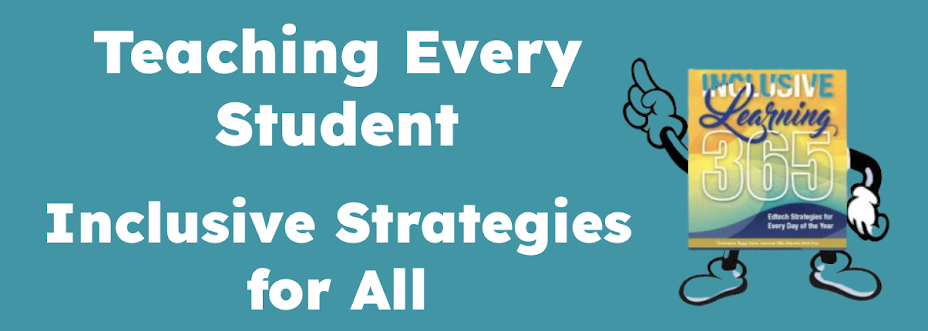So, today let's spend a few minutes on low-tech strategies - the use of visual supports for students with communication and/or intellectual disabilities and especially for students on the autism spectrum. Susan Stokes and Linda Hodgdon have dedicated their professional practices to educating others about the importance of visual supports and cues for these students.
Both Linda and Susan have repeatedly cautioned against the (over)use of language. And yet, in schools everywhere, what do we turn to (too often) when dealing with behavioral or emotional issues with students on the spectrum? Our words. Susan articulates the fact that visual processing is a strength for kids on the spectrum and auditory processing is not.
Much of the information presented in our classrooms is auditorially presented information which taps into weaknesses.
Linda Hodgdon states on her website, Use Visual Strategies.com:
Students with Autism Spectrum Disorders and lots of other students with behavior or communication challenges tend to be visual learners.Susan deepens our understanding of visual strategies when she speaks about a continuum of visual representations starting with actual objects, photographs, realistic drawings, line drawings and finally, words. Some students benefit from a more concrete representation than is afforded by line drawings (such as BoardMaker). One strategy that she suggests is:
They understand what they see better than what they hear. Therefore, they benefit significantly from the use of Visual Strategies.
Strategy: When any visual representation system is used, it is important to combine it with a written word, as many children with autism exhibit a high interest in letters and words, and some even become early readers. Therefore we should continually enhance the child's literacy skills by also providing the written word with any type of visual representation system.Both Linda and Susan are highly skilled Speech and Language Pathologists. We can learn a great deal from their expertise. Most importantly, we must heed their advice to use words sparingly and tap into the strengths of our students using visual representations and supports.
(For additional information, I live blogged a presentation that Susan gave at Closing the Gap last year here.)

7 comments:
Karen - thank you for your post this morning! It is very timely for me, working up to a post on a local resource on non-visual learning disabilities. Your site is also a wealth of information and resources!!!! Cheers GailD
oops - I meant to say NVLD - non-verbal learning disabilities (goodness my eyes are tired!!)
Gail,
Thank you for your comments - we are all learning from each other and I'm pleased that you found the links to other resources helpful. It is vital that we get the word out that language can be confounding for some of our students. Let's teach to strengths not weaknesses.
Glad you stopped by!
Thanks Karen! It is so important to remember the continuum of visual representations. Many teachers that I work with often start with Boardmaker symbols. These symbols are so difficult for many students. It's important to start with actual objects then photos, especially if they are functioning developmentally below 18 months. On another note, the strong visual processing skills of students with autism make them excellent candidates for learning daily living and social skills through video modeling.
Hi again Karen. Well I have finally done a posting on this. Please let me know if it is helpful....cheers, gail d
Hi Karen - this is a great new article from The New York Times - "A Novel Theory of Mental Disorders....." http://www.nytimes.com/2008/11/11/health/research/11brain.html?_r=1&oref=slogin
and this... http://www.autismhangout.com/news-reports/feature-programs.asp?id2=48
are you a member of the CEC?????
Post a Comment